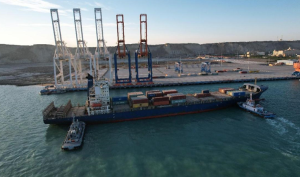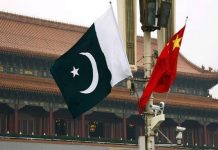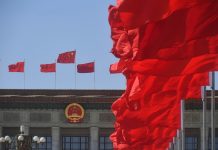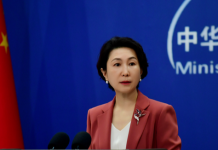By Cheng Shijie, Yang Xun, Mu Zongcong, Ren Yan, People’s Daily
The China-Pakistan Economic Corridor (CPEC), launched in 2013, is a signature project under the Belt and Road Initiative (BRI). The Gwadar Port, located in southwest Pakistan, serves as the flagship of the CPEC and an important node for improving regional connectivity.
Over the past decade, the Gwadar Port has embraced rapid development driven by the BRI, turning from a remote fishing village into a crucial regional logistics hub and industrial base.
In the past 10 years, the Gwadar Port has undergone tremendous changes, including the addition of new loading and unloading equipment, upgrades of power facilities and water systems, as well as the expansion of supporting projects.
Today, the Gwadar Port, with full operational capacity, has become a multi-purpose terminal with 3 berths that can dock two 50,000-ton cargo ships simultaneously.
With the continuous improvement of port facilities, the Gwadar Port has become increasingly busy in recent years. According to statistics, in the first half of this year, it handled 1,162 twenty-foot equivalent unit (TEU) containers of goods and 506,800 tons of bulk cargos, showing a strong growth momentum.
In June 2022, the China-aided Eastbay Expressway of the Gwadar Port was officially opened to traffic.
The construction of the New Gwadar International Airport reached a major milestone in November 2022 with the completion of the concrete runway pavement, meeting the requirements for a Class 4F airport.
The airport, upon completion, will form a modern three-dimensional transportation network by sea, land and air together with the maritime routes of the Gwadar Port and the Eastbay Expressway, promoting local economic and social development.
Through the integrated development of sea, land, and air transportation, the Gwadar Port is gradually becoming a regional logistics hub, effectively connecting with Middle Eastern countries, Central Asian countries, and China, and creating opportunities for the integrated development of Pakistan and regional countries, said Zamir Ahmed Awan, founding chair of Islamabad-based think tank the Global Silk Route Research Alliance.
In January 2018, the Gwadar Port’s Free Zone was officially opened. According to the planning design, the free zone comprises two sections, with the one in the south covering 25 hectares.

The free zone, relying on the Gwadar Port’s advantages in geographical location, logistics, and preferential tax policies, focuses on commerce and industrial development to enhance economic vitality.
The southern section, also the start-up area, was an expanse of desert back then. Today, factories and warehouses have been successfully constructed, and a commerce center and an exhibition center have also been built.
So far, the first-phase construction of the free zone as well as investment promotion for the start-up area have been completed. A total of 35 enterprises have moved in, among which eight have started production with a total investment of over 3 billion yuan ($417.68 million).
“In developing the free zone, we focused on introducing industries that meet Pakistan’s needs, such as enterprises engaged in seafood cold chain storage and transportation,” said Yu Bo, chairman of China Overseas Ports Holding Company, the operator of the Gwadar Port.
According to Yu, in the past, seafood from Gwadar had to be first shipped to Karachi before being exported, and the establishment of cold chain facilities in the free zone has greatly reduced the logistics and storage costs for seafood.
It is reported that the future development of the free zone’s north section will take into consideration the needs of both China and Pakistan, as well as surrounding countries, in terms of industries and trade. It aims to turn the Gwadar Port into an important industrial cooperation base for the CPEC, South Asia, and Central Asia.
With the rapid development of the port, the Gwadar has gradually become an emerging development area that attracts public attention. According to statistics, in the past 5 years, the number of shops in Gwadar has increased from 5,925 to 9,023, the number of communication base stations from 18 to 38, the number of restaurants from 28 to 70, and the population from 263,000 to 445,000.
China is actively working to improve people’s livelihood in Gwadar. In order to build a better educational environment, the China Foundation for Peace and Development donated the Faqeer primary school in Gwadar, which was officially put into use in September 2016. The good environment and teaching facilities attracted children from several kilometers around.
In June 2020, the school completed a new round of expansion, which can accommodate more than 1,000 students. With the addition of a secondary school section, the school was upgraded to a middle school and equipped with modern teaching facilities such as multi-functional classrooms in response to the new teaching needs.
In October 2018, the Belt and Road Engineering Research Center for Tropical Arid Non-wood Forest was set up in the free zone to address serious desertification and better maintain vegetation. Thanks to years of efforts, the vegetation coverage in Gwadar has been constantly improved, and the sandstorms that used to ravage the area have been significantly reduced.
To alleviate the shortage of freshwater in Gwadar, a China-aided seawater desalination plant commenced in June 2022. The construction has been completed so far and the plant is currently undergoing commissioning and trial operation.
The project covers a total area of about 3,500 square meters. Once operational, it will be able to produce around 5,000 tons of freshwater per day.
Pakistani Ambassador to China Moin ul Haque called the Gwadar Port a pearl of the CPEC, saying it is vital for Pakistan to achieve economic transformation.
It is believed that in the future, with the continuous advancement of the high-quality construction of the BRI, Gwadar will surely brim with new vitality.






